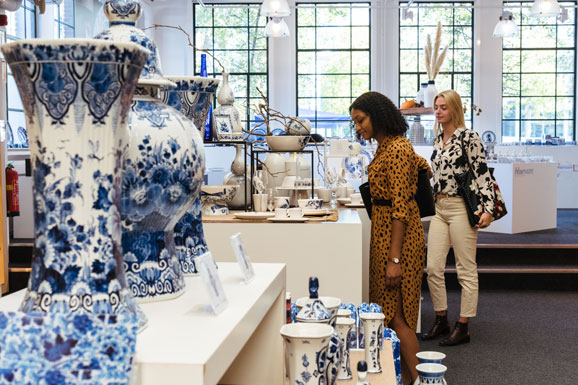Delftware or Delft pottery, also known as Delft Blue, is a term now widely used to describe the instantly recognisable Dutch earthenware. Most of it is blue and white, and the city of Delft in the Netherlands was the predominant production area in Europe.
Four centuries ago the first Dutch East India Company ships returned to Holland after their voyages to the East. They were laden with iconic Chinese blue and white porcelain first developed in the 14th-century. These imports became much sought after by royals, along with the great and the good from across Europe.
 Founded in the 17th Century
Founded in the 17th Century
This Chinese porcelain became harder to come by due to internal conflict in China. The Dutch potteries were motivated to develop their own blue and white pottery to mimic the Chinese originals, and that was the start of the Delft potteries. Delft Blue was not made from the typical porcelain clay, but from clay that was coated with a tin glaze after it was fired. There were 32 potteries founded in the 17th Century. The celebrated Royal Delft, established in 1653, is the only Delftware factory still producing, actually in Delft.
See a painter at work
This company is de Koninklijke Porceleyne Fles, and it continues to produce the Delft Blue pottery according to the traditional methods. Royal Delftware is still hand painted with the trademark blue just as it would have been when the company was first established. In 1919 the company was awarded the prefix ‘Royal’ denoting its appreciation by the Dutch Royal family.
Royal Delft is not only a factory for Delft Blue and an institute for ceramics; it also houses a museum where visitors learn about the history of this pottery as well as the production process of both Delft Blue and Royal Delft. One can see a painter at work transforming unadorned pottery into works of art. There is a life-size Delft Blue representation of the famous painting, Nightwatch. Royal Delft offers workshops for visitors to experience the craftsmanship for themselves. Only then will one appreciate the skill involved. I would start with practising on a small tile before attempting your own version of Nightwatch.
Today, Delfts Blauw (Delft Blue) is the brand name hand-painted on the bottom of ceramic pieces, identifying them as authentic and making them collectible around the world.
